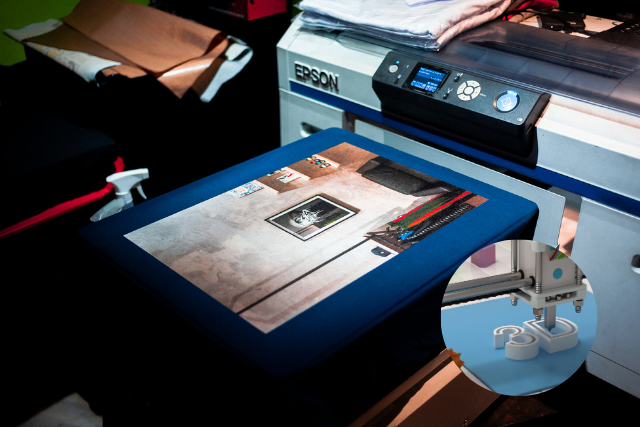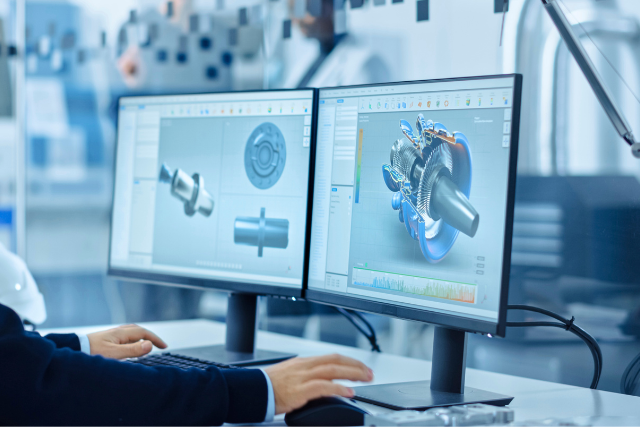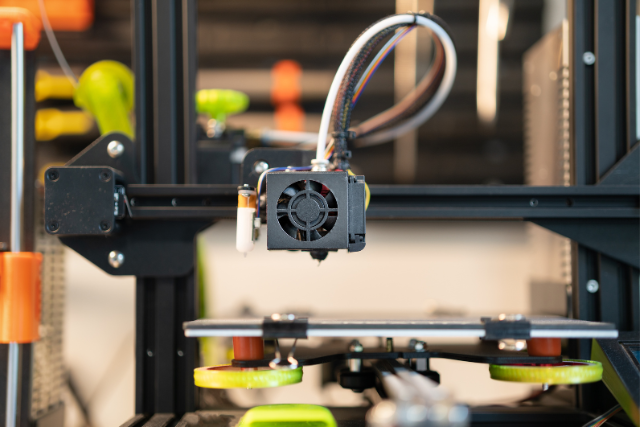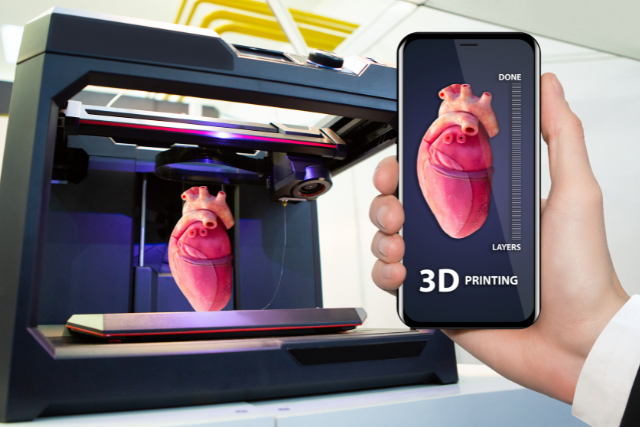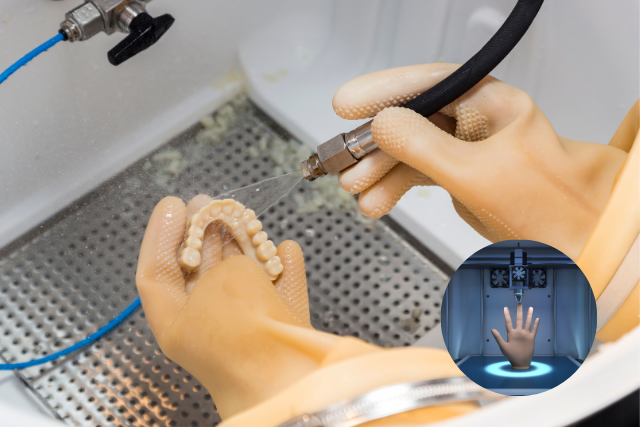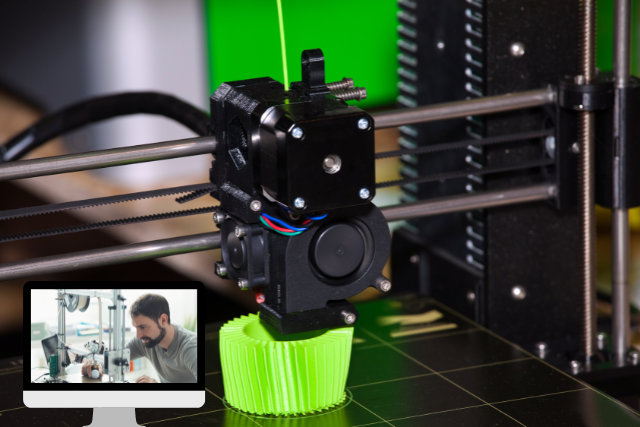Did you know that the global market for 3D-printed electronics is expected to grow by over 20% annually through the next decade? This surge is fueled by innovations transforming industries, from healthcare to aerospace.
You’ve likely heard about wearable health monitors that track your fitness levels, but that’s just the tip of the iceberg.
Imagine flexible circuits that can change how our gadgets are designed or biodegradable electronics that promise a greener future. With advancements like smart textiles and energy-harvesting devices, the potential is limitless.
Curious about how these innovations are shaping our world?
Let’s explore the frontier of 3D-printed electronics applications together.
Key Takeaways
- 3D-printed electronics enhance wearable devices with customized, flexible, and sustainable options.
- Flexible and durable electronics integration transforms fabrics into interactive smart garments.
- Rapid prototyping accelerates the development of tailored sensors and circuits, boosting innovation.
- Innovations in energy harvesting and power sources are made more efficient through 3D printing, propelling sustainable energy solutions.
Wearable Health Monitors
Wearable health monitors, revolutionized by 3D printing technology, are changing how you track and manage your health.
Imagine a device explicitly tailored to your body’s shape and needs, monitoring everything from your heart rate to your sleep patterns. That’s the promise of 3D-printed wearable health monitors.
These devices go beyond traditional health tracking by offering customization that fits your lifestyle like a glove. Whether you’re a fitness enthusiast looking to optimize your workouts or someone with a chronic condition seeking better daily management, these monitors are designed to cater to your unique situation.
As you embrace this technology, you’re not just following a trend. You’re taking a bold step towards a future where you’re in charge of your health, armed with the data and insights you need to live your best life. Welcome to the era of personalized health empowerment, courtesy of 3D printing technology.
Flexible Circuits
In 3D-printed electronics, flexible circuits stand out as a game-changer, offering unprecedented adaptability in how your devices function and fit into your life. These electronics that bend, stretch, and flex to meet your needs free you from the constraints of traditional, rigid circuit boards.
Here are four compelling reasons why flexible circuits are captivating:
- Versatility: They can be integrated into almost any shape or surface, empowering designers to rethink the form and function of electronic devices.
- Durability: Unlike traditional circuits, flexible circuits can withstand bending and folding, making your gadgets more resilient to wear and tear.
- Lightweight: They contribute to lighter electronic devices, easing the burden on your pockets and bags.
- Improved Performance: Their adaptability leads to better connectivity in complex devices, enhancing overall performance.
Customized Sensors
Diving into 3D-printed electronics, customized sensors allow you to tailor technology precisely to your specific needs and applications. This revolution allows for customization that wasn’t feasible before, making it possible to innovate and enhance various products and processes.
Whether you’re developing a new gadget, improving home automation, or pushing the boundaries in wearable technology, 3D-printed sensors can be designed to fit the exact specifications required for the job.
| Feature | Benefit |
|---|---|
| Custom Shapes | Perfect fit for unique applications |
| Rapid Prototyping | Accelerate development and testing |
| Material Variety | Choose from conductive, flexible, or bio-compatible materials |
By utilising these customizable elements, you’re adapting to the current technological landscape and actively participating in its evolution. The ability to prototype rapidly means quicker iterations, leading to faster innovation cycles. Moreover, the choice of materials opens up new possibilities regarding functionality and integration into everyday objects.
Embrace the freedom that 3D-printed customized sensors bring. You’re no longer confined by off-the-shelf solutions. Instead, you’re empowered to create sensors that precisely meet your vision, pushing the envelope of what’s possible and setting new standards in technology application.
Aerospace Components
Exploring the aerospace industry, 3D-printed components are revolutionizing how we build and design aircraft and spacecraft, offering unparalleled precision and customization. This shift is about creating a future where aerospace engineering breaks free from traditional constraints, enabling more innovative, efficient, and personalized solutions.
Here’s how 3D printing is making waves:
- Lightweight Structures: By using lattice designs that are only possible through 3D printing, components are lighter, reducing fuel consumption and emissions.
- Rapid Prototyping: Ideas go from the drawing board to the testing phase in a fraction of the time, speeding up development cycles and innovation.
- Complex Geometries: 3D printing excels at creating parts with complex shapes that are difficult or impossible to make with conventional methods, leading to optimized performance.
- Cost Reduction: It cuts down on waste material and allows for producing parts on-demand, slashing inventory and manufacturing costs.
This isn’t just about pushing boundaries; it’s about reimagining them. As you step into the world of aerospace, remember that 3D-printed components aren’t just changing the game; they’re setting a new standard for what’s possible, liberating engineers from the limits of the past.
Biodegradable Electronics
As we examine the revolutionary impact of 3D printing in aerospace, let’s also consider how this technology paves the way for biodegradable electronics, offering a solution to electronic waste with environmentally friendly alternatives.
You’re stepping into a world where your gadgets don’t just sit in a landfill for centuries. Instead, they break down naturally, returning to the earth without leaving harmful residues behind.
Here’s a simplified look at what’s happening in the realm of biodegradable electronics thanks to 3D printing:
| Feature | Benefit | Material Examples |
|---|---|---|
| Biodegradability | Reduces electronic waste | PLA, PHA |
| Customizability | Tailors to specific needs | Cellulose, Starch |
| Reduced Carbon Footprint | Lowers environmental impact | Biodegradable polymers |
| Cost-Effectiveness | Makes sustainable options accessible | Organic materials |
| Rapid Prototyping | Speeds up innovation cycles | Eco-friendly resins |
You’re part of a movement towards sustainability, where every device you use has the potential to serve you and protect the planet. It’s a step towards freedom from the constraints of traditional electronic waste, empowering you to make choices that align with your values for a cleaner, greener world.
Smart Textiles
You’re about to explore how 3D printing is revolutionizing smart textiles, focusing on wearable technology advancements, enhancing durability, and seamlessly integrating flexible electronics.
Let’s uncover how these technologies are weaving the future of fashion and function together, one layer at a time.
Wearable Technology Advancements
Harnessing the power of 3D printing, smart textiles are revolutionizing the way we interact with technology, seamlessly integrating it into the fabric of our daily lives. Imagine the possibilities:
- Health Monitoring: Clothes that track your vitals and alert you to health issues.
- Energy Harvesting: Garments that charge your devices as you move.
- Enhanced Connectivity: Jackets that connect to your smartphone, controlling music and calls with a simple touch.
- Temperature Regulation: Fabric that adjusts to keep you comfortable in any weather.
This isn’t just fashion; it’s the future of personal technology, woven into every thread of your life, freeing you from the constraints of traditional devices.
Enhanced Durability Techniques
Building on the innovative features of smart textiles, it’s crucial to explore how enhanced durability techniques ensure these high-tech fabrics withstand daily wear and tear. These advancements ensure they last longer and keep up with your dynamic lifestyle.
Let’s have a look at some of these critical techniques.
| Technique | Benefit |
|---|---|
| Nano-coating | Repels water and stains |
| Reinforced Fibers | Increases tear resistance |
| Thermal Stability | Maintains structure in heat/cold |
| UV Protection | Prevents fading from sunlight |
| Self-healing Materials | Repairs small cuts or punctures |
Through these methods, your smart garments aren’t just gadgets you wear but resilient companions in your pursuit of freedom and innovation.
Integrating Flexible Electronics
Integrating flexible electronics into textiles transforms ordinary fabrics into interactive, smart garments that adapt to your needs. Imagine clothes that fit perfectly and interact with your environment, providing a level of convenience and liberation you’ve never experienced before.
Here’s how they’re changing the game:
- Health Monitoring: Smart textiles can monitor your vital signs, informing you about your health in real time.
- Environmental Adaptation: They adjust to temperature changes, ensuring you’re always comfortable.
- Energy Harvesting: Convert your movements into energy, powering devices without the need for external power sources.
- Enhanced Connectivity: Stay connected with seamless communication device integration, ensuring you’re always in the loop.
This leap towards smart textiles signifies a future where your clothes do more than cover; they cater, communicate, and care.
Energy Harvesting Devices
Shifting gears to energy harvesting devices, you’ll find that the advancements in 3D-printed electronics have significantly bumped up their efficiency. Imagine wearing a device that powers itself — now a reality with wearable power sources. These innovations mark a leap towards sustainable and convenient energy solutions.
Efficiency Enhancements
Harnessing the power of 3D printing, energy harvesting devices are becoming more efficient, opening new possibilities in generating and using electricity. This revolution does it more innovatively, with less waste and more creativity.
Let’s understand the efficiency enhancements:
- Reduced Material Waste: 3D printing allows for precise construction, minimizing excess materials.
- Customizable Designs: Tailor energy harvesters to specific environments, optimizing their efficiency.
- Rapid Prototyping: Quickly test and refine devices, ensuring the most effective designs are pursued.
- Integration Ease: Seamlessly incorporate these devices into existing structures or products, enhancing energy independence.
These advancements push us towards a future where you’re at the helm, steering towards sustainability and technological freedom.
Wearable Power Sources
Imagine charging your smartwatch just by walking, thanks to innovative wearable power sources. These devices harness energy from your movements and convert it into power for your gadgets.
During your adventures, you’re no longer tethered to sockets or burdened by dead batteries. It’s not just about convenience; it’s about embracing a future where energy is everywhere and for everyone.
| Technology | Source of Energy | Applications |
|---|---|---|
| Piezoelectric | Pressure & Movement | Watches, Fitness Bands |
| Thermoelectric | Body Heat | Smart Clothing |
| Solar | Sunlight | Backpacks, Hats |
| Electromagnetic | Ambient Radio Waves | Smart Fabrics |
This table showcases just a glimpse of what’s possible. Dive into the world of wearable power sources and liberate yourself from the constraints of traditional power.
Conclusion
You’ve just explored the frontier of 3D-printed electronics, from wearable health monitors that keep tabs on your vitals to flexible circuits that bend with your needs.
Customized sensors and aerospace components are revolutionizing industries, while biodegradable electronics and smart textiles weave sustainability into technology. And with energy harvesting devices, you’re tapping into the power around us.
This innovation wave is reshaping how we interact with technology, making it more personal, sustainable, and integrated into our lives. Dive in and be part of this exciting journey!

